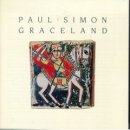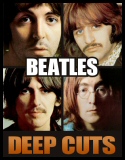Music Home / Entertainment Channel / Bullz-Eye Home
 Buy your copy from Amazon.com Buy your copy from Amazon.com
| Paul Simon: Album Released: 1986 |
Detractors are fond of saying that Paul Simon’s Graceland is just another case of a rich white man stealing the poor black man’s music. Others accused Simon of breaking the cultural boycott established by free democracies against the apartheid regime in South Africa. Neither charge is true. Simon went to Africa for inspiration, and found just that, collaborating with several South African musicians, including Ladysmith Black Mambazo (LBM). In the end, the United Nations Anti-Apartheid Committee supported Simon since the album showcased the talents of black South African musicians while lending zero support to the country’s government.
Graceland won the Grammy for Album of the Year in 1987 and, a year later, the title track won the Grammy for Record of the Year. Written about a visit with his son to Elvis Presley’s home in Memphis, TN, the song is full of potent imagery about love and redemption. The connection is telling – Elvis is credited with bringing black music to the white people and, in this case, Simon is bringing African music to Americans. Simon has said that this is not only his best song, but his favorite as well.
“You Can Call Me Al” had the most chart success of any track on the album, peaking at #23 on the Billboard Hot 100.It features subtle background vocals by LBM and some surprisingly funky bass work Simon produced a video for the song, which featured Chevy Chase lip-synching the vocals as Simon grudgingly played different instruments. Even though it was a very sparse video for those days – it was just two guys and a few instruments in a white room – it received a ton of airplay on MTV. It was also one of the first videos to poke fun at lip-synching.
“I Know What I Know” is the most underrated song on the album. It features a catchy melody and entertaining background vocals by LBM. The sardonic lyrics are sung from the point of view of a guy who meets a shallow girl at a Hollywood party. With its wit and hooks, the song would be the perfect title soundtrack to an indie flick. This track, along with the wistful “The Boy in the Bubble,” showcases Simon’s ability to infuse a little bit of African music into a pop song to create a whole that is much greater than its parts.
It’s tough to see how Graceland had a negative impact on South African musicians. A full 53 artists/groups are listed in the album credits, so it hardly seems like Simon was intent on stealing anything. Ladysmith Black Mambazo was featured even more prominently during the intro of the poppy “Diamonds on the Soles of Her Shoes” and provided the main vocals on “Homeless.” Simon later produced two records for LBM, so suffice to say he had a large part in the group’s success. Graceland shined a bright light on “world” music, generating interest in that genre and no doubt helping artists across the globe get their careers off the ground. Judging by its critical and commercial acclaim, Graceland was one of the biggest musical success stories of the ‘80s, and has since gone down as one of the greatest albums of all time.
jpaulsen@bullz-eye.com






